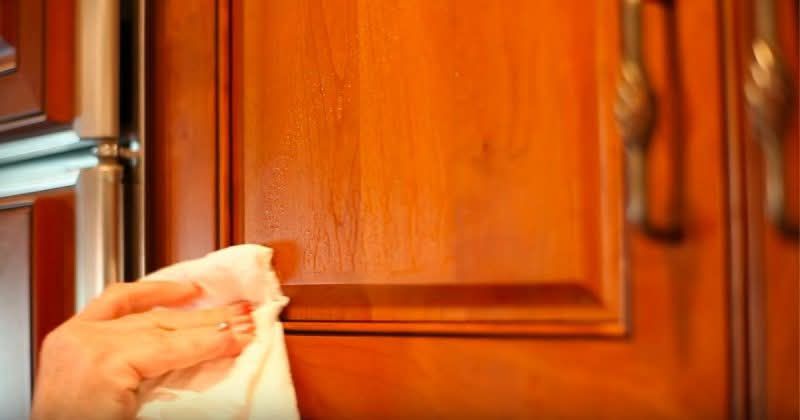ADVERTISEMENT
How To Remove Grease And Cooking Odors From Kitchen Cabinets
The kitchen is often considered the heart of the home, where delicious meals are prepared, and memories are made. However, over time, cooking can leave behind stubborn grease stains and lingering odors that seep into your kitchen cabinets, leaving them less than pleasant. Don’t worry though—there are simple, effective methods to restore your kitchen cabinets to their original beauty, and eliminate those unwanted smells. Here’s how you can clean grease and get rid of cooking odors from your kitchen cabinets with minimal effort.
Why Grease and Odors Build Up in Kitchen Cabinets
Before diving into the cleaning methods, it’s important to understand why grease and cooking odors accumulate in kitchen cabinets. Cooking fats, oils, and steam can settle on surfaces, especially on cabinets located near the stove or oven. Over time, this can build up into sticky residue. Similarly, odors from cooking (like garlic, onions, or fried food) tend to linger and get trapped in the wood or laminate, making your kitchen smell less than fresh.
Step-by-Step Guide to Removing Grease from Kitchen Cabinets
1. Gather Your Cleaning Supplies To tackle grease effectively, you’ll need the following ingredients:
- Dish Soap: A mild dish detergent will work wonders for breaking down grease.
- Baking Soda: This natural abrasive will help lift stubborn grease stains.
- Vinegar: Vinegar cuts through grease and also neutralizes odors.
- Warm Water: Warm water helps dissolve grease faster.
- Microfiber Cloths: These are great for wiping down surfaces without leaving lint behind.
- Soft Sponge or Brush: A non-abrasive sponge or brush is ideal for scrubbing without damaging the cabinet finish.
2. Prepare Your Cleaning Solution Start by filling a bowl or bucket with warm water. Add a few drops of mild dish soap and stir until it creates a soapy solution. If your cabinets have heavy grease buildup, you can make a stronger solution by adding a tablespoon of baking soda to the soapy water. The baking soda will help break down the grease.
For a natural deodorizer, mix equal parts water and vinegar in a spray bottle. Vinegar will not only help with grease removal, but also neutralize any cooking odors that may have settled in your cabinets.
3. Test on a Small Area First Before applying any solution to your entire cabinet, it’s always a good idea to test it on a small, inconspicuous area. This will ensure that the cleaning solution doesn’t damage or discolor the finish of your cabinets, especially if they are made from wood or have a painted surface.
4. Wipe Down the Cabinets Dip a microfiber cloth into the soapy water or vinegar solution and wring it out so it’s damp, not soaking wet. Gently wipe down the surface of the cabinets, starting from the top and working your way down. This will help remove any accumulated grease and grime.
For grease stains that are difficult to remove, sprinkle a little baking soda directly onto the damp cloth or sponge, then gently scrub the area in a circular motion. Baking soda acts as a mild abrasive, which will help lift the grease without scratching your cabinet’s surface.
5. Rinse and Dry Once you’ve scrubbed the cabinets thoroughly, use a clean damp cloth (just water, no cleaning solution) to wipe away any soap or baking soda residue. It’s important to rinse thoroughly to avoid leaving any cleaning solution behind, which could attract more dirt.
After rinsing, immediately dry the cabinets with a dry microfiber cloth to prevent any moisture from seeping into the wood or laminate.
How to Remove Cooking Odors from Kitchen Cabinets
Grease is just one part of the problem — cooking odors can also linger in your kitchen cabinets. To eliminate these smells, follow these simple steps:
1. Use a Natural Deodorizer Vinegar is great for neutralizing odors, but if you find the smell of vinegar too strong, there are other options to freshe
